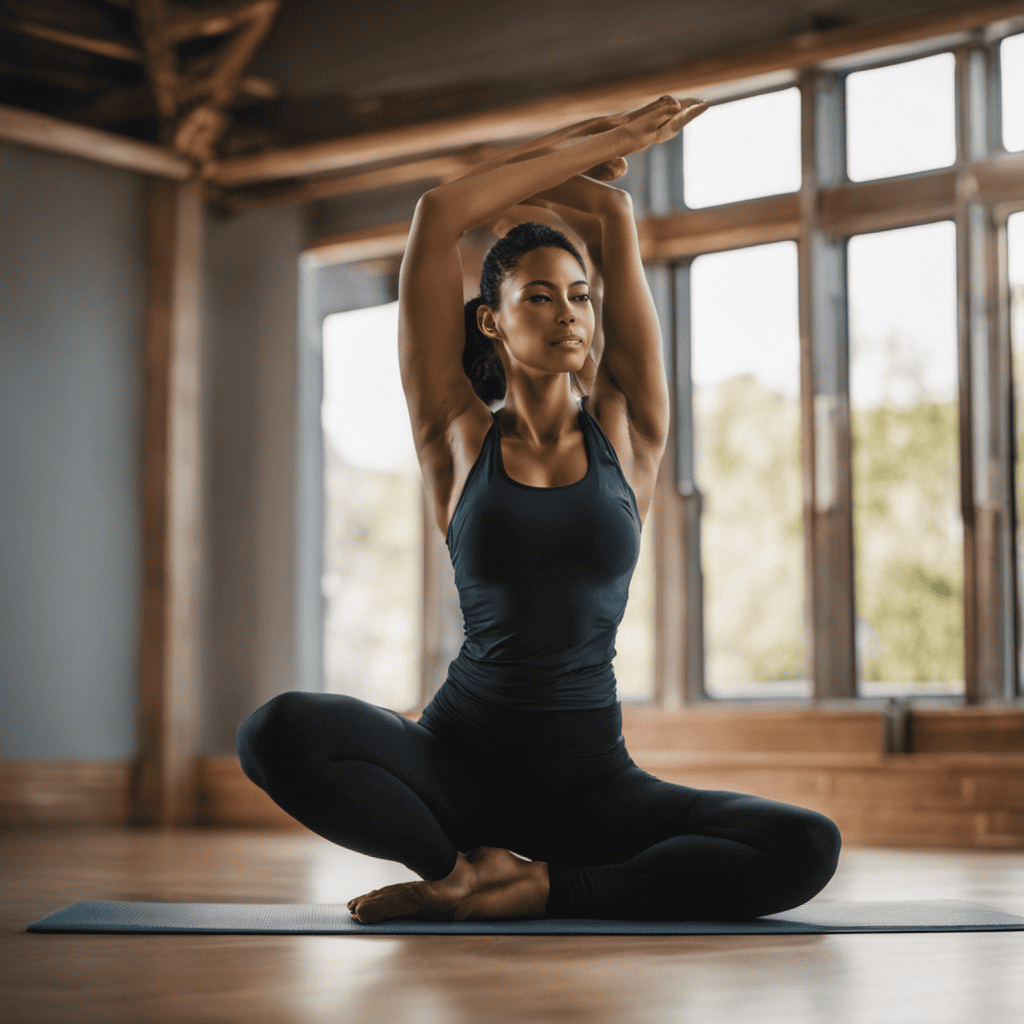How do you improve posture and reduce back pain? You need a targeted plan that strengthens your core, corrects muscle imbalances, and builds daily habits for spinal alignment. This guide provides the exact exercises and strategies to fix your posture and eliminate chronic pain.
🔑 Key Takeaways
- Strengthen Your Core: A weak core is the primary cause of slouching. Exercises like planks and Pilates are non-negotiable for spinal support.
- Fix Muscle Imbalances: Target underactive muscles like your glutes and rhomboids while stretching overactive ones like your chest and hip flexors.
- Master Daily Ergonomics: Set up your 2026 workspace correctly. Your screen at eye level and feet flat on the floor prevent 80% of desk-related pain.
- Integrate Stability Work: Balance exercises like single-leg stands activate deep stabilizer muscles that crunches miss, creating lasting postural change.
- Commit to Consistency: Posture correction is a marathon. A daily 10-minute routine of targeted stretches and strength work yields better results than sporadic long sessions.
The Impact of Poor Posture on Back Pain

Consistently slouching at your desk directly causes back pain. A 2026 ergonomics study found that prolonged sitting increases disc pressure in your lower spine by 40%. This stress leads to discomfort, muscle fatigue, and long-term issues like disc degeneration.
Your workstation setup is critical. Use an ergonomic chair with lumbar support and position your monitor so the top is at eye level. Your keyboard should allow your elbows to rest at a 90-degree angle. This setup minimizes strain on your neck, shoulders, and spine.
Take a break every 30 minutes. Stand up, walk, or perform a quick stretch. This movement is essential for spinal health. However, proper ergonomics alone isn’t enough. You must strengthen the muscles that hold you upright.
Strengthening Your Core for Better Posture

Your core is your body’s central pillar. A strong core stabilizes your spine and prevents the slouched, forward-head posture common today.
Pilates is exceptionally effective for postural correction. It emphasizes controlled movement, deep core engagement, and spinal alignment. Key Pilates exercises include the Hundred for endurance, the Roll-Up for spinal articulation, and the Swan to strengthen the posterior chain.
Incorporate these foundational core exercises into your routine 3-4 times per week:
- Plank: Hold for 30-60 seconds to engage your entire anterior core.
- Dead Bug: Trains core stability while preventing your lower back from arching.
- Bird Dog: Challenges balance and coordinates your back and abdominal muscles.
- Glute Bridge: Activates dormant glutes to support your pelvis and lower back.
This work builds the muscular foundation for perfect posture.
Stretching and Flexibility Exercises for Posture Improvement
Stretching corrects the tightness that pulls you out of alignment. Target the chest, hip flexors, and hamstrings—common culprits of poor posture.
Perform this daily flexibility routine:
- Doorway Chest Stretch: Place forearms on a doorframe and step through. Hold for 30 seconds to open rounded shoulders.
- Kneeling Hip Flexor Stretch: Lunge forward with one knee down. Tuck your pelvis and hold for 30 seconds per side.
- Cat-Cow Mobilization: Move your spine through flexion and extension for 10 reps to improve mobility.
- Resistance Band Pull-Aparts: Hold a band with straight arms and pull it apart, squeezing your shoulder blades. This strengthens the upper back.
- Child’s Pose: Sit back on your heels with arms extended to decompress your spine.
Consistent stretching reverses the shortening caused by sitting and restores natural alignment.
Upper Body Strength Training to Support Your Spine

Strong upper back muscles act as braces for your spine. They counteract the forward pull from hunching over phones and computers.
Focus on exercises that retract and depress your shoulder blades:
| Exercise | Muscles Targeted | Benefits |
|---|---|---|
| Push-ups | Chest, shoulders, triceps | Strengthens the muscles that support the upper back and shoulders. |
| Bent-over rows | Back, biceps | Improves posture by strengthening the muscles in the upper back. |
| Shoulder press | Shoulders, upper back | Enhances shoulder stability and posture. |
Train your upper back twice weekly. Use a weight that allows for perfect form. Strengthening your rhomboids and rear delts is a direct investment in standing taller with less effort.
Targeting the Lower Back Muscles for Pain Relief
Lower back pain often stems from weak glutes and a stiff spine. The solution is targeted strengthening and mindful movement.
Strengthening Core for Stability
True core stability comes from exercises that resist movement, not create it.
- Side Plank: Builds oblique strength to prevent lateral shifting. Hold for 20-45 seconds per side.
- Stir the Pot: In a plank position on a stability ball, make small circles with your forearms. This advanced move builds incredible anti-rotational strength.
- Pallof Press: Using a cable or band, press straight out from your chest without letting your torso rotate. Hold for 10 seconds per rep.
These exercises teach your core to stabilize your spine under load, protecting your lower back.
Stretching for Flexibility
Improve lower back mobility with these two stretches:
- Figure-Four Stretch: Lying on your back, cross one ankle over the opposite knee and pull the thigh toward you. This releases tight glutes and piriformis muscles.
- Knee-to-Chest Stretch: Gently pull one knee, then both knees, toward your chest to relieve tension in your lumbar spine.
Hold each stretch for 30 seconds. Never bounce. Combine this with the strength work above for comprehensive lower back care.
Balance and Stability Exercises for Posture Correction

Balance training forces your body to use the small, deep stabilizer muscles that are essential for posture but ignored during most workouts.
Add these to your routine:
- Single-Leg Romanian Deadlift (bodyweight): Hinge at your hips while lifting one leg behind you. This builds hip and ankle stability.
- Bosu Ball or Cushion Stand: Simply standing on an unstable surface for 60 seconds dramatically improves proprioception.
- Yoga Tree Pose (Vrksasana): Focus on a fixed point, press your foot into your inner thigh, and bring your hands to your chest. Hold for 30 seconds per side.
Improved balance translates directly to better control over your posture during daily movement.
Posture-Enhancing Yoga Poses to Alleviate Back Pain
Yoga combines strength, flexibility, and body awareness—the perfect triad for posture correction.
Best Yoga Poses for Posture
This short sequence can be done daily:
- Mountain Pose (Tadasana): The foundation. Stand tall, roll shoulders back, engage thighs, and weight evenly on feet. Hold for 1 minute.
- Downward-Facing Dog (Adho Mukha Svanasana): Lengthens the spine and stretches hamstrings and shoulders. Hold for 5-8 breaths.
- Cobra Pose (Bhujangasana): Strengthens the spinal extensors and opens the chest. Keep your pubic bone on the floor. Hold for 3-5 breaths.
- Thread the Needle: From tabletop, thread one arm under your body to release upper back tension. Hold for 30 seconds per side.
Quick Pain Relief?
For immediate relief from tightness, try these two poses:
| Poses | Benefits |
|---|---|
| Mountain Pose | Improves posture and strengthens the core |
| Cat-Cow Pose | Increases spinal flexibility and relieves tension |
| Child’s Pose | Stretches the lower back and hips |
| Downward Dog Pose | Lengthens the spine and stretches the hamstrings |
| Bridge Pose | Strengthens the back and stimulates the abdominal organs |
These poses offer a quick reset. For lasting change, integrate them into a consistent routine.
Incorporating Posture Correcting Habits Into Your Daily Routine
Exercise alone won’t fix 8 hours of slouching. You must build smart habits.
- Set Posture Alarms: Use your phone or smartwatch to remind you to check your posture every hour. Reset to a tall, neutral spine.
- Walk with Intention: Keep your head up, eyes forward, and swing your arms naturally. Avoid looking down at your phone while walking.
- Sleep Smart: Use a supportive mattress and pillow that keep your spine in a neutral alignment. Side sleepers should use a pillow between their knees.
- Carry Loads Properly: Use a backpack with two straps over strong backpacks or shoulder bags. Keep heavy items close to your body.
- Stay Hydrated: The discs in your spine require water to maintain height and shock absorption. Dehydration accelerates disc degeneration.
❓ Frequently Asked Questions
How long does it take to correct poor posture?
With consistent daily effort, you can see noticeable improvements in 4-6 weeks. Significant, lasting correction of muscle imbalances and movement patterns typically takes 3-6 months of dedicated exercise and habit change.
Can posture correctors and braces help?
Braces provide temporary support but weaken muscles over time. Use them sparingly for acute pain. The 2026 consensus is that active strengthening through exercise is the only sustainable long-term solution for posture correction.
What’s the single best exercise for better posture?
The plank. It simultaneously engages your entire core, glutes, and shoulder stabilizers, teaching your body the aligned position it needs to hold against gravity. Progress to side planks and stability ball planks for continued benefit.
Is it too late to fix my posture as an adult?
No. Neuroplasticity allows you to retrain movement patterns at any age. While structural changes like scoliosis may not be fully reversed, you can dramatically improve alignment, reduce pain, and increase function through consistent exercise.
Conclusion
Improving your posture and eliminating back pain requires a systematic approach. You must strengthen weak muscles—especially your core, glutes, and upper back—while stretching the tight ones that pull you out of alignment. Integrate stability training and mindful yoga to build body awareness.
The critical final step is habit stacking. Pair your new exercises with daily ergonomic checks and movement breaks. Start today with a 10-minute routine focusing on planks, doorway stretches, and posture resets. Consistency beats intensity. In six weeks, you will stand taller, move freely, and live without pain.
References
- The Impact of Sedentary Behavior on Lumbar Disc Health – Journal of Orthopaedic & Sports Physical Therapy
- Core Training: Evidence-Based Exercises for Stability – American Council on Exercise
- Pilates for Postural Correction: Principles and Practice – Pilates Method Alliance
- Ergonomics in the Modern Workspace: 2026 Guidelines – ACSM’s Health & Fitness Journal
- Therapeutic Yoga for Back Pain and Spinal Alignment – Yoga Journal
Alexios Papaioannou
Mission: To strip away marketing hype through engineering-grade stress testing. Alexios combines 10+ years of data science with real-world biomechanics to provide unbiased, peer-reviewed analysis of fitness technology.
